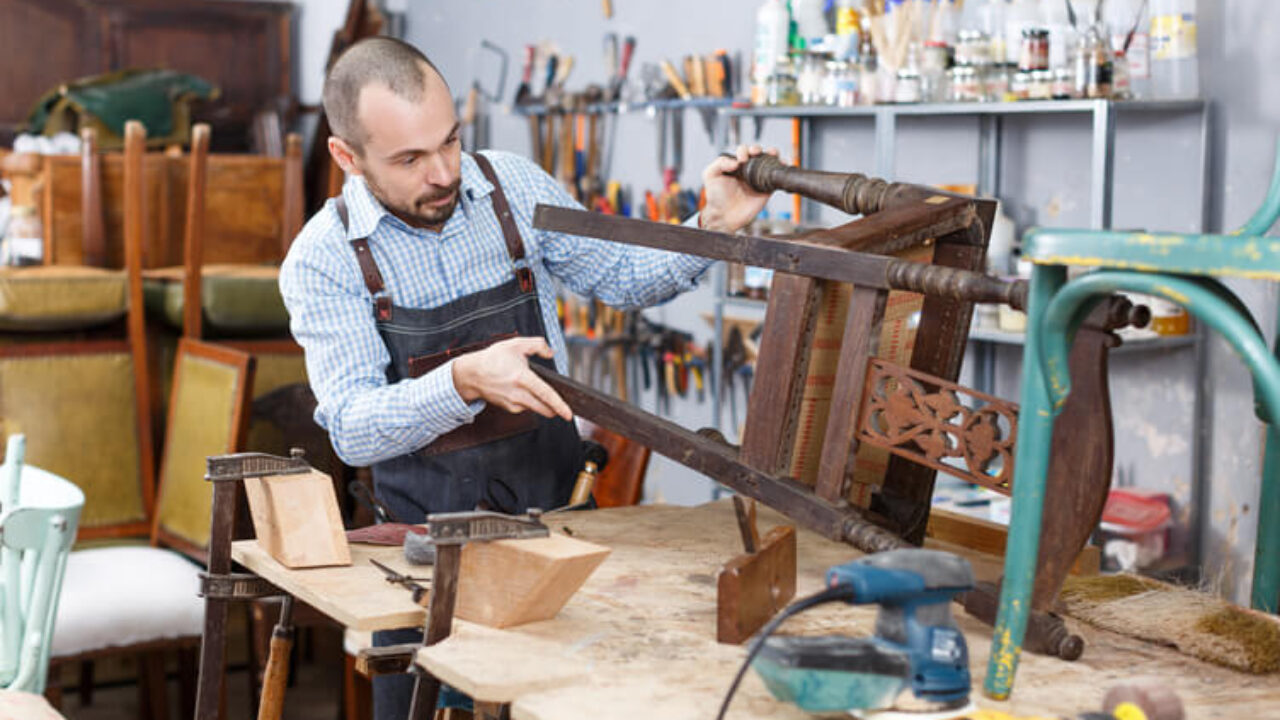In a world filled with mass-produced furniture, there is something truly special about restoring an antique piece back to its former glory. From uncovering hidden secrets to preserving intricate details, the art of restoring antique furniture is a rewarding journey filled with history and craftsmanship. Join us as we delve into the essential guide for breathing new life into beloved heirlooms and timeless treasures.

– Understanding the Historical Value of Antique Furniture
Antique furniture holds a significant amount of historical value, each piece telling a unique story of the past. Whether it’s a beautifully crafted Victorian chair or a classic French armoire, these pieces have stood the test of time and are a reflection of the craftsmanship and design aesthetics of their era. Restoring antique furniture not only preserves its beauty but also allows us to maintain a piece of history for future generations to appreciate.
When it comes to restoring antique furniture, it’s important to approach the process with care and attention to detail. Here are some tips to guide you through the restoration journey:
- Assess the condition: Before starting any restoration work, thoroughly examine the piece to determine its current state. Look for any signs of damage, wear, or previous repairs that may need attention.
- Research the piece: Take the time to research the history and design of the furniture piece to gain a better understanding of its original form and materials used.
- Choose the right techniques: Depending on the type of wood and finish, select the appropriate restoration techniques such as cleaning, repairing, refinishing, or reupholstering.
By following these steps and respecting the historical value of antique furniture, you can breathe new life into these timeless pieces while preserving their authenticity and charm.
– Assessing the Condition of Your Antique Piece
When assessing the condition of your antique furniture piece, it is essential to take a thorough and detailed approach. This will help you determine the extent of any damage or wear and tear that may need to be addressed during the restoration process.
One of the first things to look for when evaluating your antique piece is any signs of structural damage, such as loose joints or missing pieces. Inspect the entire piece carefully and make note of any areas that may need attention.
Next, examine the surface of the furniture for any scratches, chips, or stains that may need to be repaired or refinished. Take note of any areas where the finish is worn or discolored.
It is also important to check for any signs of woodworm or other pests that may have infested the piece. Look for small holes or sawdust around the furniture, which may indicate an infestation.
By thoroughly assessing the condition of your antique furniture piece, you will be better equipped to create a restoration plan that will help you bring the piece back to its former glory.
– Step-by-Step Techniques for Restoring Antique Furniture
Restoring antique furniture can be a rewarding process that brings new life to cherished pieces. Whether you’re looking to repair damage, refresh the finish, or simply clean and polish your furniture, following a few key techniques can help you achieve professional results.
Here are some step-by-step techniques for restoring antique furniture:
- Assessment: Begin by assessing the condition of the piece. Look for any damage such as scratches, cracks, or missing pieces. Take note of the type of wood and finish to determine the best restoration approach.
- Cleaning: Start by cleaning the furniture with a gentle solution of mild soap and water. Avoid harsh chemicals that can damage the wood. Use a soft cloth to remove dirt and grime, being careful not to scrub too hard.
- Repair: For minor scratches and dents, use a wood filler to fill in the damaged areas. Allow the filler to dry completely before sanding it down to match the surrounding wood. For more extensive damage, consider consulting a professional restorer.
- Refinishing: If the furniture’s finish is worn or faded, consider refinishing the piece. Sand down the old finish, apply a new stain or paint, and finish with a protective topcoat to restore the furniture’s original beauty.
By following these step-by-step techniques, you can breathe new life into your antique furniture and preserve its beauty for years to come.
– Preserving the Beauty and Integrity of Antique Furniture
Restoring antique furniture can be a rewarding experience, allowing you to preserve the beauty and integrity of these timeless pieces. Whether you’ve stumbled upon a hidden gem at a flea market or inherited a cherished family heirloom, following these tips will help you bring new life to your antique furniture.
Assess the Condition: Before starting any restoration work, carefully inspect the furniture for any damage or wear. Take note of any missing pieces, cracks, scratches, or loose joints that need attention.
Research: Take the time to research the history and style of your piece. Understanding the era it comes from and the techniques used in its construction will help guide your restoration process.
Conservation: When restoring antique furniture, it’s important to prioritize conservation over modification. Opt for gentle cleaning methods, minimal repairs, and reversible techniques to ensure the piece retains its authenticity and value.
As you embark on the journey of restoring antique furniture, remember to approach each piece with patience, care, and a deep respect for its history. By following the steps outlined in this guide, you can breathe new life into these cherished treasures, preserving their beauty for generations to come. So roll up your sleeves, grab your tools, and let the magic of restoration begin. Happy restoring!

